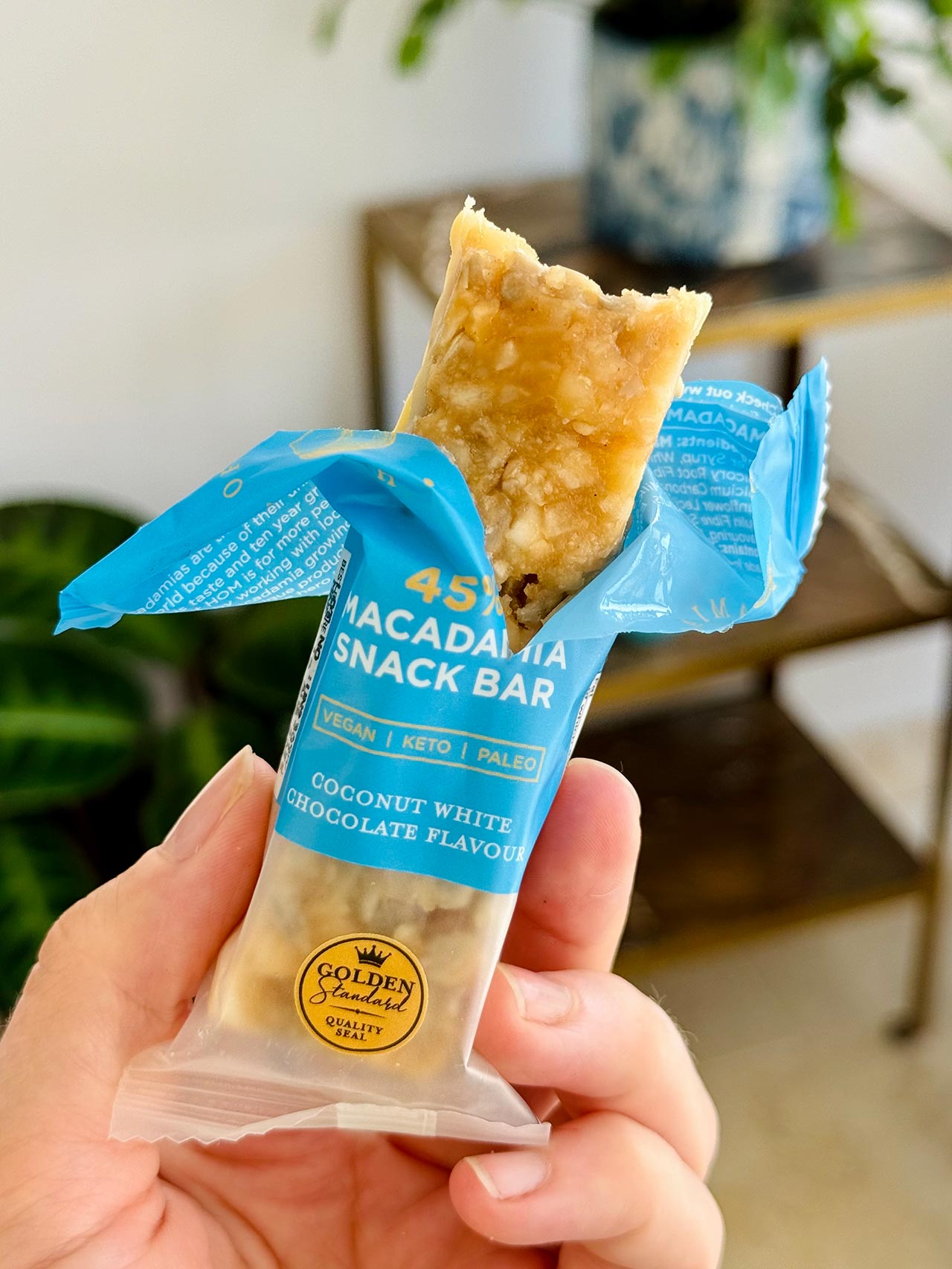Quick Summary tl;dr
Dirty Keto sticks to low-carb, high-fat goals but doesn’t focus on food quality. It can be convenient and might jumpstart weight loss, but it often comes with fewer nutrients and potentially questionable ingredients.
Clean Keto emphasizes whole, nutrient-dense foods—helping you get vitamins, minerals, and better long-term health benefits, though it can require more planning.
Pros of Dirty Keto: Quick results, easy to follow, flexible with food choices, and potentially budget-friendly.
Cons of Dirty Keto: Potential nutrient gaps, reliance on processed options, and higher risk of long-term health concerns.
Making Dirty Keto Healthier: Instead aiming for perfection and removing all foods that are not “squeaky clean”, focus on adding healthy options. Try blending convenience foods with whole foods, choose better fats, read labels, stay hydrated, and supplement when needed.
Reality Check: Very few people follow a perfectly “clean” keto diet 24/7. What really matters is finding a balance that keeps your carb intake low without making the lifestyle feel overwhelming or unsustainable.
Bottom Line: Dirty Keto can work if you’re consistent about carb limits, but focusing on nutrient-dense foods is key to feeling better and maintaining your results over time.
Ever heard of “Dirty Keto” but not entirely sure what sets it apart from a regular keto diet? If you’ve been eating low-carb, you know the goal is to keep carbs down. But Dirty Keto adds a twist: it doesn’t focus much on food quality. Think fast foods, processed snacks, and convenience items—all technically “keto” if they keep your carb count low.
Sounds simple, right? I’ve been low-carb for over a decade and have tried it all. I’ve also seen firsthand how it can transform lives far beyond weight loss—our app users have collectively lost tens of thousands of pounds, regained their energy levels, and even managed to get off medication. Before you jump in, it’s worth asking whether a lower-carb approach is all it takes for good health.
In this article, I’ll give you the basics of Dirty Keto, explain how it stacks up against a cleaner approach, and share why just staying under a certain carb number might not be the whole picture.
What Is Dirty Keto?
If you’re new to keto, you probably already know the main rule: keep your carbs low and your fats high. But when it comes to overall food quality, that’s where things can differ. Dirty Keto is often summed up as “ALAYMYM”—as long as you meet your macros. It puts most of the focus on hitting daily carb and fat targets rather than worrying about how nutritious or processed the foods might be.
For instance, on a more “clean” keto plan, you might reach for salmon, avocado, and cauliflower. On Dirty Keto, it might look more like a ready-made keto bread with a long list of ingredients, snack bars made with IMOs (isomalto-oligosaccharides), or a fast-food meal cooked in vegetable oil paired with rapeseed-based mayonnaise. Sure, you can still reach ketosis by doing this, but does it cover all the bases for good health? That’s the big question.
While it can be tempting to view keto simply as a low-carb, high-fat weight-loss tool, we know that food quality matters—especially if you want benefits that go beyond the scale. Understanding the difference between Dirty Keto and a cleaner approach is the first step to deciding what’s right for you.
Key Differences: Dirty Keto vs. Clean Keto
What really sets Dirty Keto apart from a more traditional, cleaner approach? While both aim for low carbs and high fats, the overall food choices can shape how you feel—and how healthy your diet is in the long run. Here are the main differences:
Food Quality
- Clean Keto: Usually emphasizes whole, nutrient-dense foods like avocados, leafy greens, and quality proteins (e.g., wild-caught salmon or pasture-raised eggs).
- Dirty Keto: Might include a takeaway bunless burger and coleslaw with rapeseed oil-based mayo, or a “keto-friendly” full English breakfast that skips bread and beans but still has sausages containing starches and fillers. You may stay under your carb limit, but the nutritional value often pales in comparison to whole foods.
Nutrient Profile
- Clean Keto: Tends to provide higher levels of vitamins, minerals, and antioxidants because it relies on fresh, unprocessed ingredients.
- Dirty Keto: Helps you reach ketosis by keeping carbs low but might leave gaps in essential nutrients. Regularly consuming processed snacks, oils, or packaged meals can contribute to missing out on fiber and micronutrients.
Long-Term Health
- Clean Keto: Supports better overall health by combining low-carb principles with balanced meals.
- Dirty Keto: When you focus mostly on “ALAYMYM” (as long as you meet your macros), you could unintentionally overlook essential nutrients. Over time, this might lead to deficiencies or other health concerns, especially when you include high amounts of inflammatory oils, food dyes and preservatives.
Sustainability
- Clean Keto: While it may take more planning, many find it easier to keep up with a diet rich in whole foods—and you’re more likely to feel satisfied.
- Dirty Keto: Convenience foods can make life simpler, at least in the short run. But over time, you might notice less energy or even cravings if your meals lack essential nutrients. It’s not about being perfect 100% of the time, but rather aiming for healthier choices whenever possible.
Pros and Cons of Dirty Keto
When you rely on ALAYMYM (as long as you meet your macros), there’s no question that Dirty Keto can keep carbs low and maintain ketosis. But it also comes with some clear trade-offs. Here’s a closer look at both sides:
Pros
- Easy to Follow: Dirty Keto can be simpler for busy schedules. You can grab ready-made keto breads, fast-food options, or packaged snacks without spending extra time cooking.
- Fast Results (at First): If your main goal is quick weight loss or getting into ketosis, Dirty Keto might deliver—especially if you’re strict about carb limits.
- Less Restriction on Food Choices: Craving a burger without the bun or a “keto-friendly” snack bar? Dirty Keto says go for it, as long as you’re within your macro range.
- Possibly Budget-Friendly: Depending on your approach, Dirty Keto could cost less if you rely on cheap convenience items or fast-food specials. (Though keep in mind, some processed “keto” products can get pricey.)
Cons
- Nutrient Gaps: Processed foods often lack essential vitamins, minerals, and fiber. Over time, this could leave you with deficiencies or digestive issues.
- Potential Long-Term Health Concerns: Many processed items include questionable ingredients such as inflammatory oils, added sugars, artificial sweeteners or fillers. Relying on these all the time can affect your heart health, gut health, and more.
- Quality Matters for Weight Maintenance: You might lose weight initially, but eating nutrient-poor foods can lead to cravings, energy crashes, and difficulty maintaining results.
- Taste and Satisfaction: While convenience is nice, consistently eating processed meals can get monotonous. Balancing with some whole foods can help you feel more energized and satisfied.
Making Dirty Keto Healthier: Practical Tips and Strategies
Dirty Keto doesn’t have to be all fast food and processed meals. If you’re aiming for a more balanced approach—even when convenience is a priority—these tips can help you bridge the gap:
Balance Out Processed Foods
Enjoying a store-bought keto bread or snack bar can help you stay on track, but try pairing it with whole foods whenever possible. For instance, top your ready-made bread with avocado or add a side of leafy greens for extra vitamins and minerals.
- Minimize Snacking: Whenever you can, opt for satisfying meals with plenty of protein, healthy fats, and low-carb vegetables, so you’re not constantly grazing. If you do need a quick boost or a travel-friendly snack, consider more natural options like House of Macadamia snack bars. (You can simply use the link, or use the code KDA at checkout to get 10% off.)
- Eating Out Smart: It’s tough to control the oils and cooking methods used at restaurants. Skip mayo made with inflammatory oils, watch out for sugary sauces, and try to stick to simpler preparations like grilled meats and veggies drizzled with olive oil or cooked in butter. Small tweaks like these can help you avoid unnecessary fillers and keep your meal as keto-friendly as possible.
Add More Nutrient-Dense Options
Aim to include a variety of vegetables, protein sources, and natural fats. It’s not about being perfect; small changes—like adding zucchini noodles or a side salad—can make a big difference in meeting your nutrient needs.
Choose Better Fats
Instead of relying solely on vegetable or seed oils, look for healthier options like extra-virgin olive oil or coconut oil. They can help reduce unwanted additives and boost the nutritional value of your meals. Macadamias are also an excellent source of healthy fats—I’ve been a fan for years! If you’d like to try my favorite macadamia-based snacks, click here,, or use the code KDA at checkout for 10% off.
For a more comprehensive look at the best fats to include for optimal health, check out this guide.
Read Labels Carefully
Even “keto-friendly” snacks can hide fillers, sugars, or questionable ingredients. Make it a habit to glance at labels for carb counts, added sugars, and artificial flavors. The more aware you are, the easier it is to pick products that truly fit your goals.
Stay Hydrated and Supplement if Needed
Processed foods don’t always provide the electrolytes, vitamins, or fiber your body craves. Consider supplements or electrolyte drinks if you find you’re lacking key nutrients.
Plan Ahead
Meal prepping or even just sketching out a weekly menu can help you balance convenience foods with healthier picks. It cuts down on last-minute drive-thru choices and keeps you focused on your long-term goals. If you’re looking for extra help, our app includes free planning and tracking—no subscription required. If you’d like personalized features, the premium upgrade costs less than $2 per week, and you can click here or use code KETO25 for 25% off our annual membership.
Listen to Your Body
Pay attention to energy levels, cravings, and how you feel after meals. If you notice fatigue or constant hunger, it might be a signal to swap in more whole foods or adjust your overall approach.
By taking a few extra steps, you can enjoy the flexibility of Dirty Keto while still getting a boost of nutrients—and potentially better long-term results.
Dirty Keto Isn’t Always So ‘Dirty’
Personally, I’m not a fan of super-strict, almost cult-like thinking when it comes to healthy eating. Over the years, I’ve noticed that those who preach a perfectly “clean” approach don’t necessarily follow it themselves 100% of the time.
In reality, “dirty keto” is more of a spectrum than a strictly defined diet—few people maintain a spotless keto plan all the time, and that’s okay. Instead, it’s about finding a balance between convenience and quality, so you can stick with keto in the long run without feeling overwhelmed or worrying it’s unsustainable.
Conclusion
Dirty Keto might look tempting if you’re short on time or simply want a more flexible way to stay under your carb limit. It can help kickstart weight loss by sticking to the basics—low carbs, high fat. However, if you care about long-term health and better energy, it pays to look beyond just meeting macros.
Instead of overhauling your diet overnight, focus on adding healthy options (like leafy greens, high-quality proteins, and wholesome fats) rather than trying to remove every less-ideal choice at once. This gradual shift keeps the pressure low and makes it easier to maintain your momentum. By blending a few convenient Dirty Keto picks with a variety of nutritious whole foods, you’ll find a balance that supports your goals—whether that’s weight loss, better overall wellness, or both.
Remember, keto isn’t just about dropping carbs or chasing numbers on the scale. It’s about creating an eating pattern that feels right for your body and lifestyle in the long run. If Dirty Keto helps you stay on track occasionally, great—but don’t forget the power of nutrient-rich, whole-food meals to truly fuel and nourish you.
Do you like this post? Share it with your friends!





